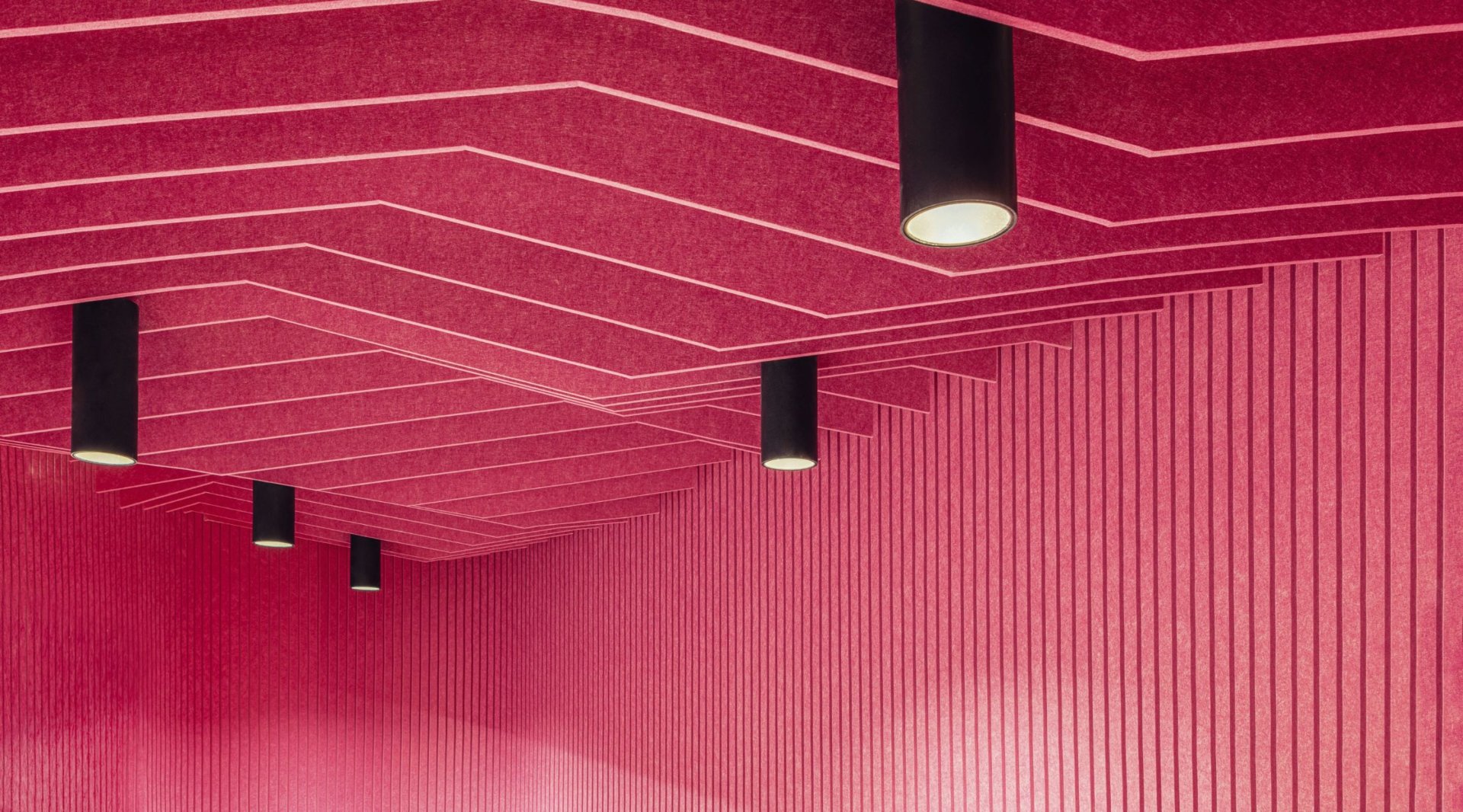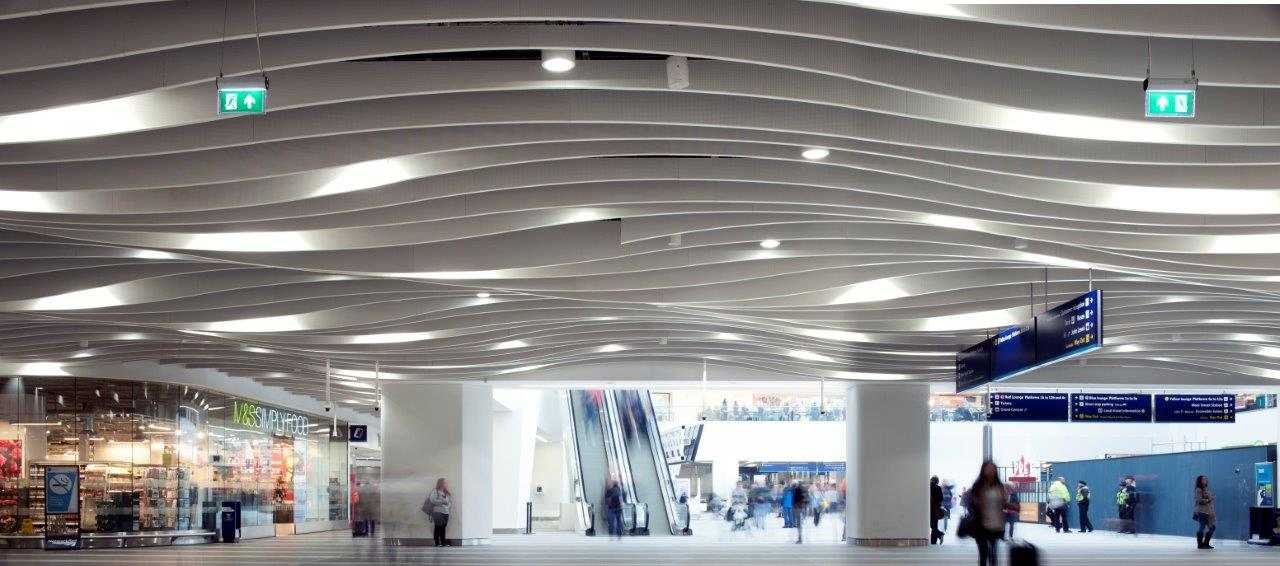One of the consequences of urban living in the 21st century is having to accept the unprecedented pace of development and higher levels of activity. An unfortunate byproduct of this is the constant barrage of noise that we’re exposed to on a daily basis. While some may shrug it off, others can’t help but feel an almost visceral sense of irritation. Regardless of how you perceive it, noise is still a distraction, and it has a bigger impact on our well being than we may realise.
To put things into perspective, a report from the WHO Europe, titled Burden of Disease From Environmental Noise, estimates the cost of noise pollution at $30.8 billion a year. The study involves an analysis of the lost workdays, healthcare treatment, impaired learning and decreased productivity due to noise. The total is staggering, especially considering they’re looking at just one continent.
So, how important is acoustics in architecture and interior design? In short… very. For a longer explanation, read on.
First, it’s important to understand the effects of sound, good and bad, on our overall health within the context of different environments, and what we can do to control them.
How Can Sound Affect our Health and Wellness
It’s not a case of ‘if’ noise affects us, it’s about ‘how much’ it affects us.
Hearing is primal and there’s little you can do to turn off this sense internally. The world is increasingly noisy and most of us have to deal with traffic, construction, loud music, or even just people talking on their phones. On the surface, it may seem like we have become accustomed to this noise, but it continues to affect us in a powerful, unseen way. This is in part to the complexity of our auditory system. “When you experience a stressful noise, the amygdala, an area of the brain that contributes to emotional processing, sends a distress signal to the hypothalamus,” says Thomas Münzel, a cardiologist at the Johannes Gutenberg University. “It then immediately signals the adrenal glands to pump adrenaline, which is an evolutionary measure to react rapidly in threatening situations.’ Adrenaline and another stress hormone called cortisol bring on the physiological changes, including a spike in heart rate and blood pressure. “Your body reacts so fast, you often can’t tell these changes happened.”
Loss of Productivity in the Workplace
Complaining about noise may seem trivial, until you really think about it. According to a study by the University of California, Irvine, “It takes an average of 23 minutes and 15 seconds to get yourself back on track after being interrupted.” Multiply that by an average of five interruptions a day and you’ve lost almost three hours of productive work.
A study by environmental psychologist Dr. Nigel Oseland found that just 25% of the effect of noise in the office could be attributed to its volume. Psychological factors are at play here, and things like context and attitude, perceived control and predictability, and personality type are more likely to be the reason some people find noise distracting. “Noise is a psychophysical phenomenon,” says Dr, Oseland. “As long as we continue to focus on physical metrics and disregard the psychological component, we will never resolve the biggest and often ignored problem of noise in the workplace.”
Organisations need to think carefully when designing their workspaces, and have a plan in place to manage noise levels. What might seem like an insignificant change may be the difference between an employee choosing to stay or leave your company citing an unproductive work environment.
The Role of Acoustics in Healthcare Environments
Healthcare workers may not be too worried about ROI and finance related metrics, but they do care a lot about patient health and recovery. Noise in a healthcare facility creates a ripple that affects everyone down the chain of care.
On a basic level, noise disturbs sleep and rest, which in turn affects recovery. This leads to anxiety, and a need for more medication and nurse calls, which then puts pressure on healthcare workers and hospital capacity. According to the WHO, nighttime noise levels above 55 decibels can disturb sleep and even boost heart disease risk, so hospitals should be at 30 or below. Sudden noises are worse as they trigger our stress response, which is a natural coping mechanism that occurs when we perceive something around us to be a threat. In most cases, the stress response is short term, and the person’s heart rate and blood pressure soon return to normal.
A primary reason hospitals are noisy is because, in addition to people-generated noise, there’s a lot of equipment working in the background. Secondly, surfaces in hospitals – walls, floor and ceiling – tend to be sound reflecting rather than sound absorbing. The noises propagate deep and traverse long distances, and constant exposure has proven to cause fatigue, burnout, and even emotional exhaustion in healthcare workers.
The Impact of Noise on School Children
Poor classroom acoustics create a negative learning environment that impedes learning, leading to drastic consequences. According to the National Academies Press, Speech intelligibility studies have found that a child’s ability to recognise speech sounds and patterns is decreased by even modest levels of ambient noise, and this is magnified for younger children. This problem may not be so appreciated by adults, who are better able to recognise speech in the presence of noise.
Maureen Downer, reporter for the Atlanta Journal Constitution (AJC), who has written several editorials and opinion pieces about local, state and federal education policy, mentions overhearing this at a school meeting: “We expect schools and school children to accept conditions that would not be tolerated in any adult workplace.”
Noise is closely linked to poor cognitive development and speech patterns in school kids. Pre-teen kids are easily distracted by nature, and the addition of noise doesn’t do them any favours. On the flip side, teachers often have to speak with a higher tone to compensate for heavy background noises, like air conditioning, often leading to a generally loud and distracting learning environment.
Remember your ABCs
Fortunately, we’ve come a long way in acoustic design. The strategy for managing and maintaining a good acoustic quality environment is simple: Absorption, Blocking, and Covering… the ABC of Acoustics.
Most people think open plan offices are a recipe for disaster. However, smart designers know that it’s simply a matter of planning, from using the obvious solutions, such as carpeting and acoustic panelling, to the most elaborate ones, such as plants and vertical gardens. Isolating common sources into one corner, like printers and coffee machines, is a simple way of blocking out predictable noise sources.
Absorption is perhaps the easiest and most aesthetically viable mode of sound control. At least three studies indicate that high performance, sound absorbing ceiling tiles and panels can reduce noise levels and perceptions of noise, thereby impacting other outcomes, such as improved speech intelligibility.
Acoustic panels absorb sound and reduce their reverb time and intensity. People often mistake acoustic panels for being a substitute for soundproofing. Soundproofing doesn’t do much to improve the quality within the space, but rather isolates the sound within it. Another common error that people make is settling for poor quality products. Cheap materials like packaging foam will absorb sound much less efficiently than professional grade acoustic panels. High quality products use special fabrics that are tested for their acoustic quality, with testing results readily available for you to verify. Additionally, professional grade acoustic wall and ceiling panels look fantastic, adding a flair of style to your environment.










